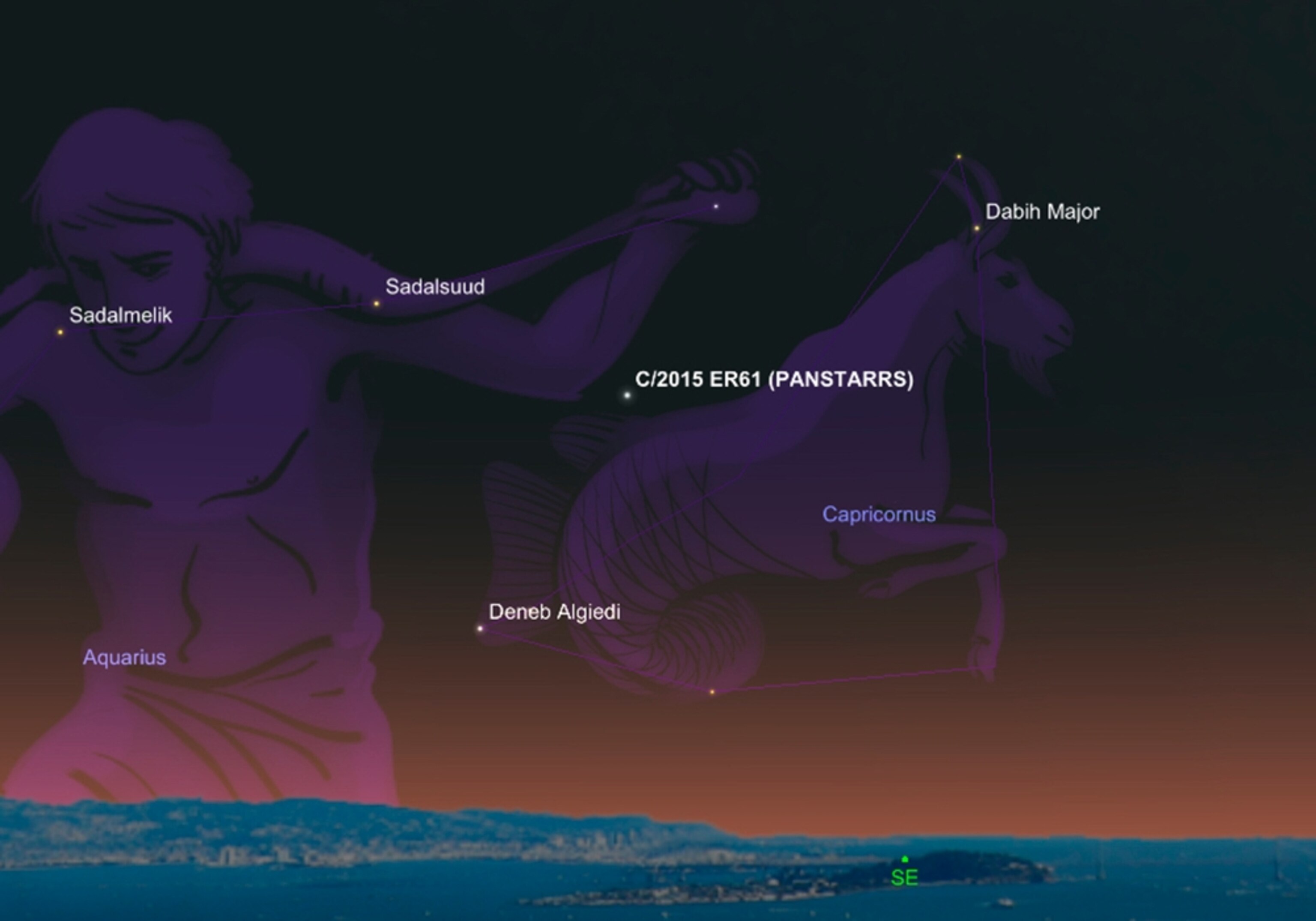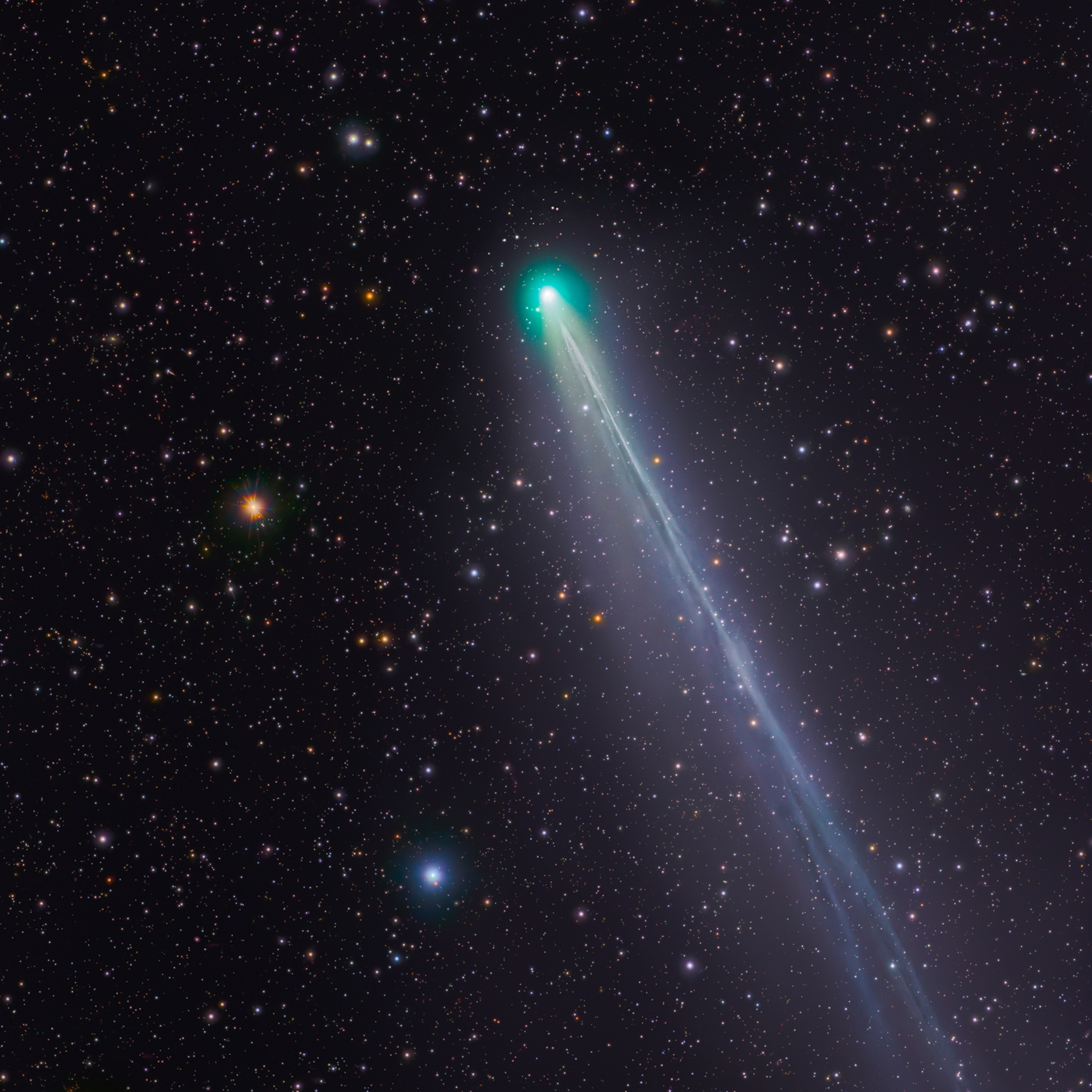
4 Stunning Comets Are Close to Earth Now—How to See Them
This may be your best time to see one of these icy visitors, as a cometary quartet graces our skies over the coming weeks.
This month is shaping up to be a comet-lover’s bonanza: Four icy interlopers are racing through the inner solar system right now, and they are all relatively easy to see with binoculars.
Backyard astronomers around the world have been keeping tabs on these icy intruders as they approach the sun, and some of the comets show tantalizing signs that they will soon brighten to at or near naked-eye levels.
As a comet nears the sun, solar heat and light begin to vaporize its coating of ices, allowing pockets of gas and dust to escape. At first, a large hazy atmosphere shrouds the once inactive comet, helping the icy boulder to glow brighter in our skies.
As the comet gets closer to the sun, more of its ices vanish, and solar pressure can turn the freed gas and dust into one or more sweeping tails. The comet Hyakutake, which graced our skies back in 1996, currently holds the record for the longest tail, stretching out more than 310 million miles.
Of course, comets are like cats, as one famous astronomer quipped, because they are notoriously fickle when it comes to predicting their behavior. At a moment's notice, an internal gas pocket can explode into space, and the comet can undergo a sudden and dramatic brightening. However, the gravitational pull from the sun can just as easily break a comet into pieces, causing it to fade into the night.
The only way to know how bright a comet can get for Earth-bound observers is to keep an eye on it as it sails across our skies.
Here’s a sky-watching rundown for each of the four comet buzzing us now.
Comet 41P/Tuttle–Giacobini–Kresák

Comet 41P sails through our neck of the woods every 5.5 years. Currently, this compact mile-wide comet is hovering around 7th magnitude, which is just beyond the limit of what can be seen with the naked eye under ideal conditions. But the comet is easy to find with binoculars for observers across the Northern Hemisphere as it zooms through the constellation Draco, the dragon.
This comet passed by Earth on its inbound journey on April 1 at a distance of 13 million miles, and it will make its closest approach to the sun on April 12. During its outbound trek on April 18 and 19, the comet will pass less than a degree by the naked-eye star Rastaban in the head of the celestial dragon. The day after, as it begins its journey through the constellation Hercules, the comet will start to fade and become a better target for backyard telescopes.
Comet Lovejoy (C/2017 E4)

Appearing as a more condensed green fuzzball, C/2017 E4 may be even easier to spot than Comet 41P. Discovered only a month ago by an Australian amateur astronomer using a large telescope, the long-period comet has steadily brightened and now shines in the pre-dawn skies at magnitude 7.0.
Lovejoy rises in the northeast horizon by about 3 a.m. local time, moving close by several naked-eye stars in the constellation Pegasus. With the blinding light of the full moon expected to arrive on April 11, the next few days may be the best opportunity to catch this first-time visitor to the inner solar system.
Comet Johnson (C/2015 V2)

Discovered in 2015, this comet will also be making tracks through the constellation Hercules just as it's expected to reach a brightness of at least magnitude 7.4 (an easy binocular target) toward the end of the month. On April 22 and 25, C/2015 V2 will be moving past naked-eye stars in Hercules, making it easier to hunt down.
It will be worth keeping tabs on this comet in the coming months, as it could even reach naked-eye brightness before it swings by the sun in mid-June. Catch this icy interloper now, as it won’t return to the inner solar system for at least another 14 million years!
Comet PanSTARRS (C/2015 ER61)

Discovered two years ago by its namesake robotic telescope system, C/2015 ER61 was initially no brighter than magnitude 21, visible only through the largest of observatory telescopes. Flash forward to this month, and the comet has reportedly brightened past magnitude 6.5, making it a cinch to see through binoculars and only a tad too faint for naked-eye viewing from dark locations.
Northern Hemisphere observers can catch this comet floating through the constellation Aquarius very low in the pre-dawn skies, looking like a tiny puffball hanging in the morning twilight. As dawn approaches, the comet will appear to rise higher, making it somewhat easier to spot just before the heavens get too bright.
C/2015 ER61 is worth keeping an eye on throughout April and into May, as it is scheduled to sail past Earth on April 19 at just 109 million miles and then swing around the sun on May 10.
Keen comet watchers should be able to follow all four visitors as distinct fuzzy balls among the pinpoint lights of stars, though they will fade rapidly as they head back out into deep space. Look for any possible tails of gas and dust to stretch upward in the sky, always pointing away from the sun.
The darker the sky, the more you will be able to see, so try to escape the city lights so you can properly say hello to these weary long-distance travelers as they swing by our local neighborhood.
Good luck comet hunting!
Andrew Fazekas, the Night Sky Guy, is the author of Star Trek: The Official Guide to Our Universe and host of NG Live! Mankind to Mars presentations. Follow him on Twitter, Facebook, and his website.








